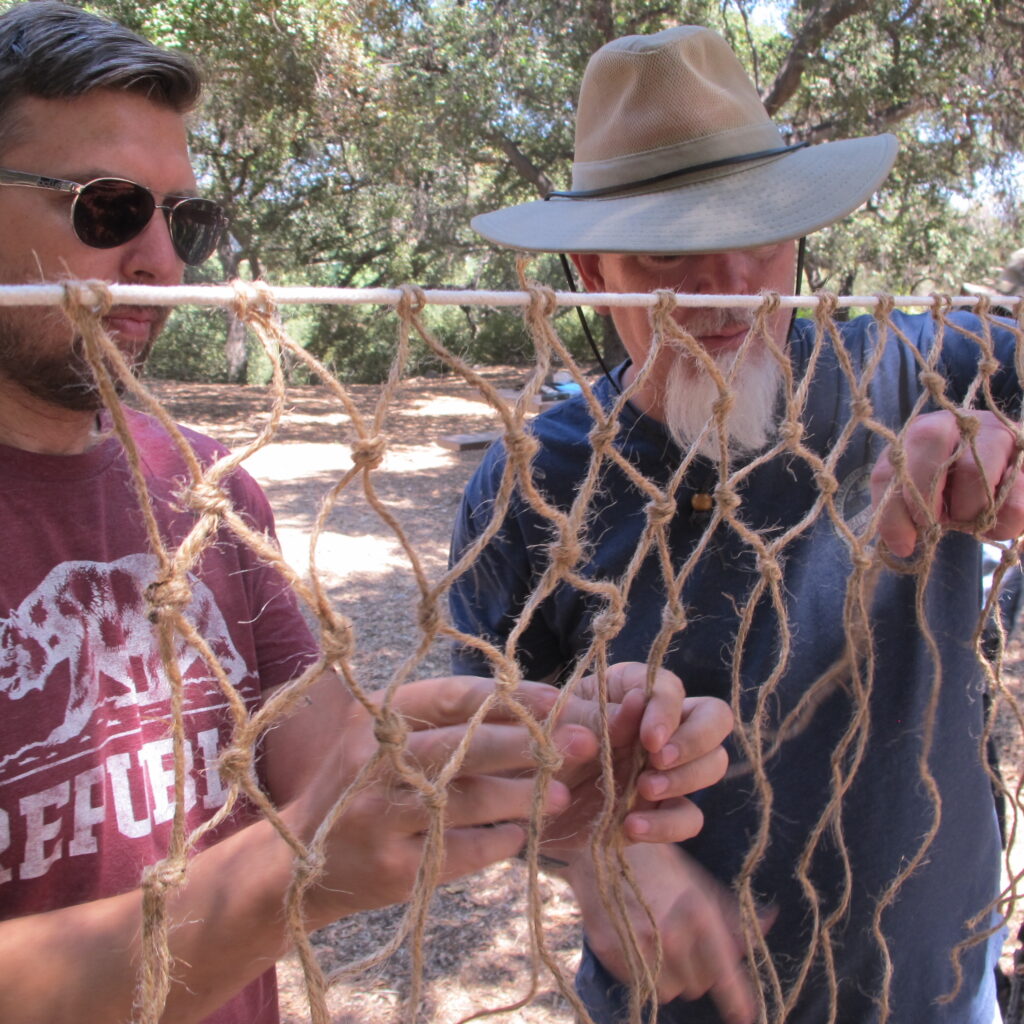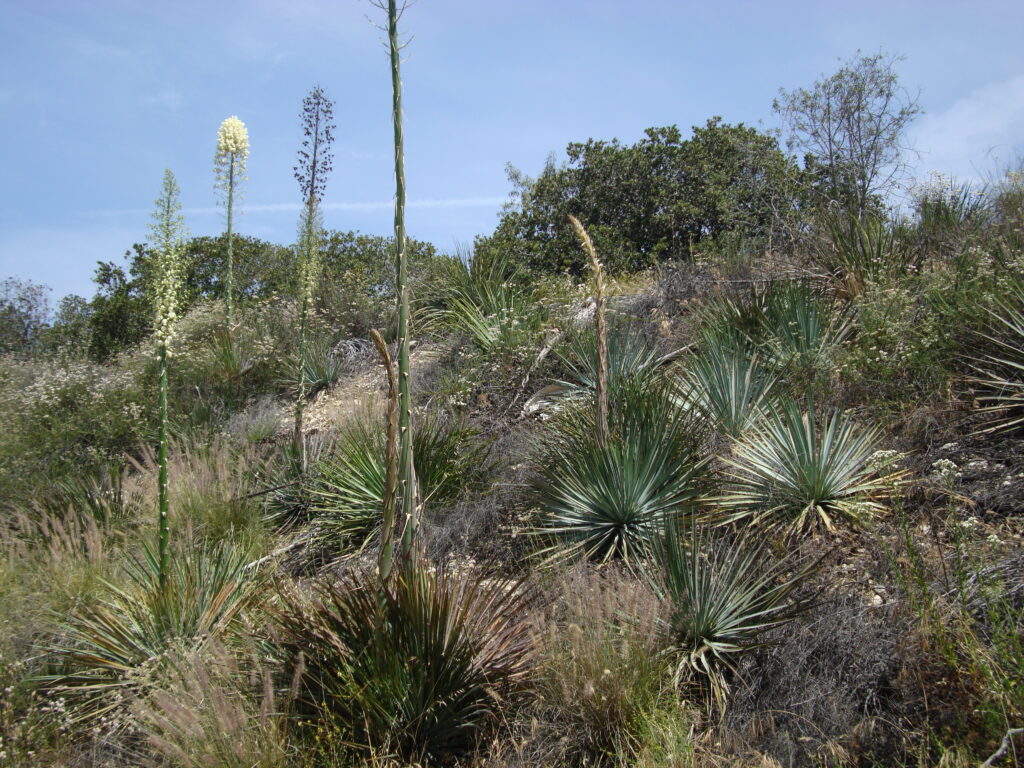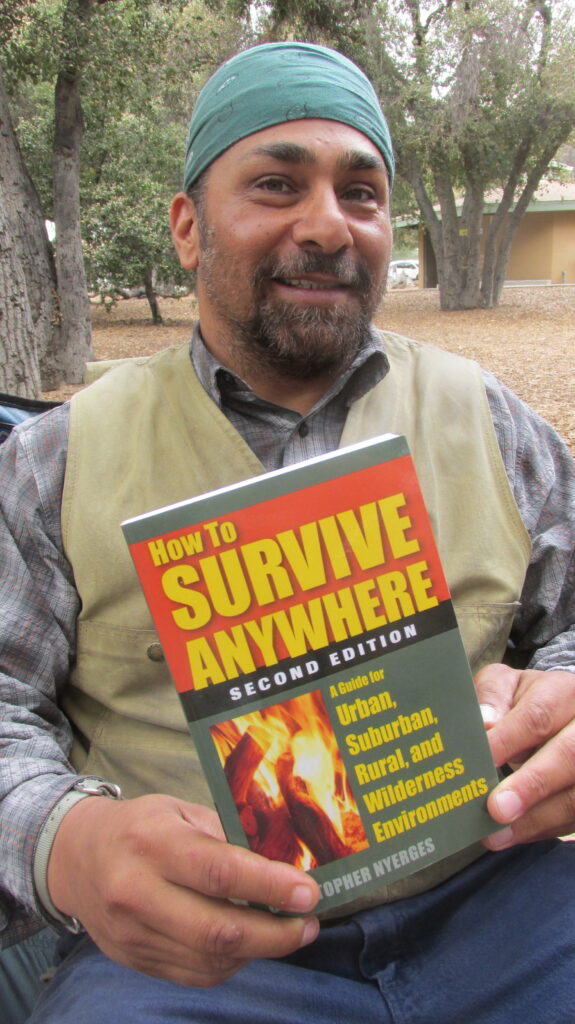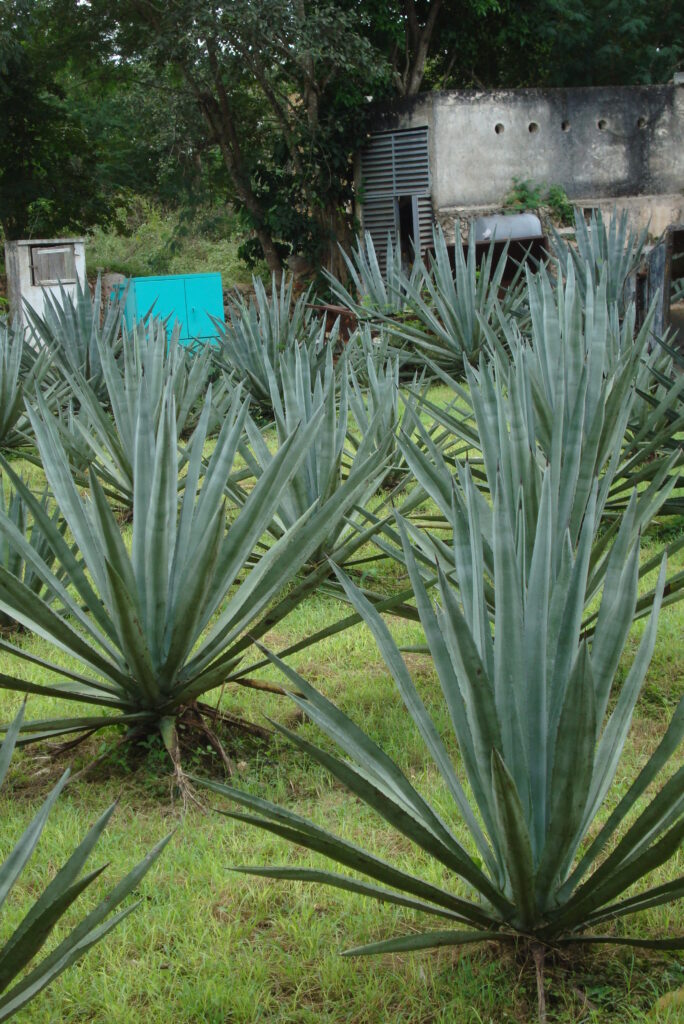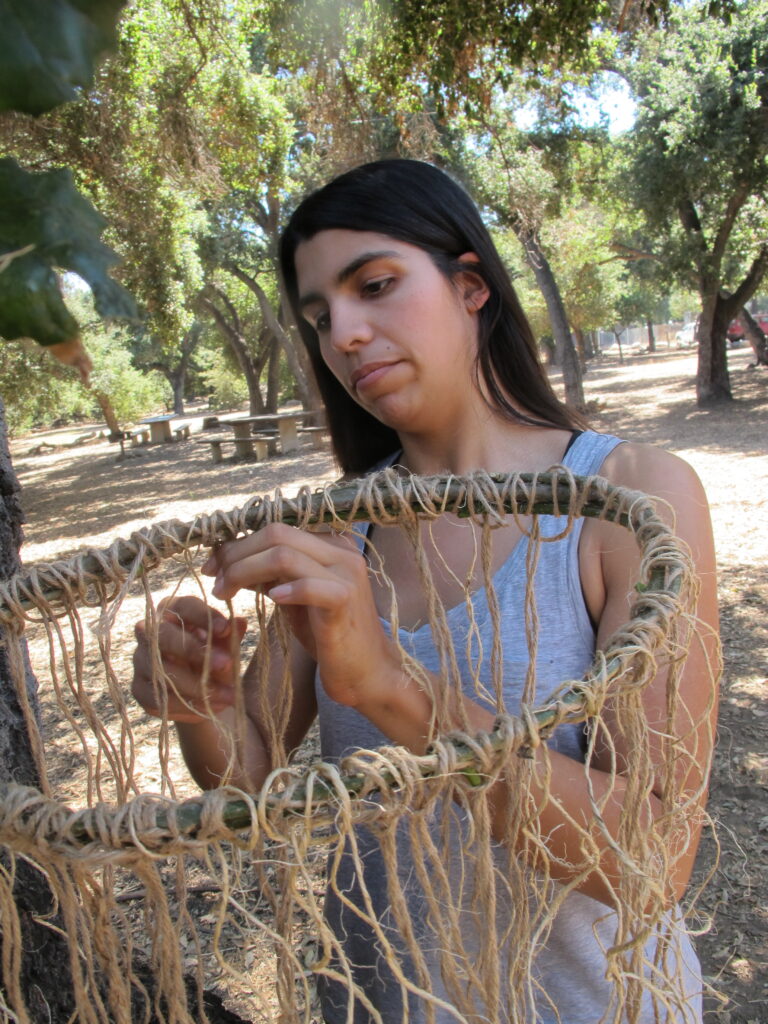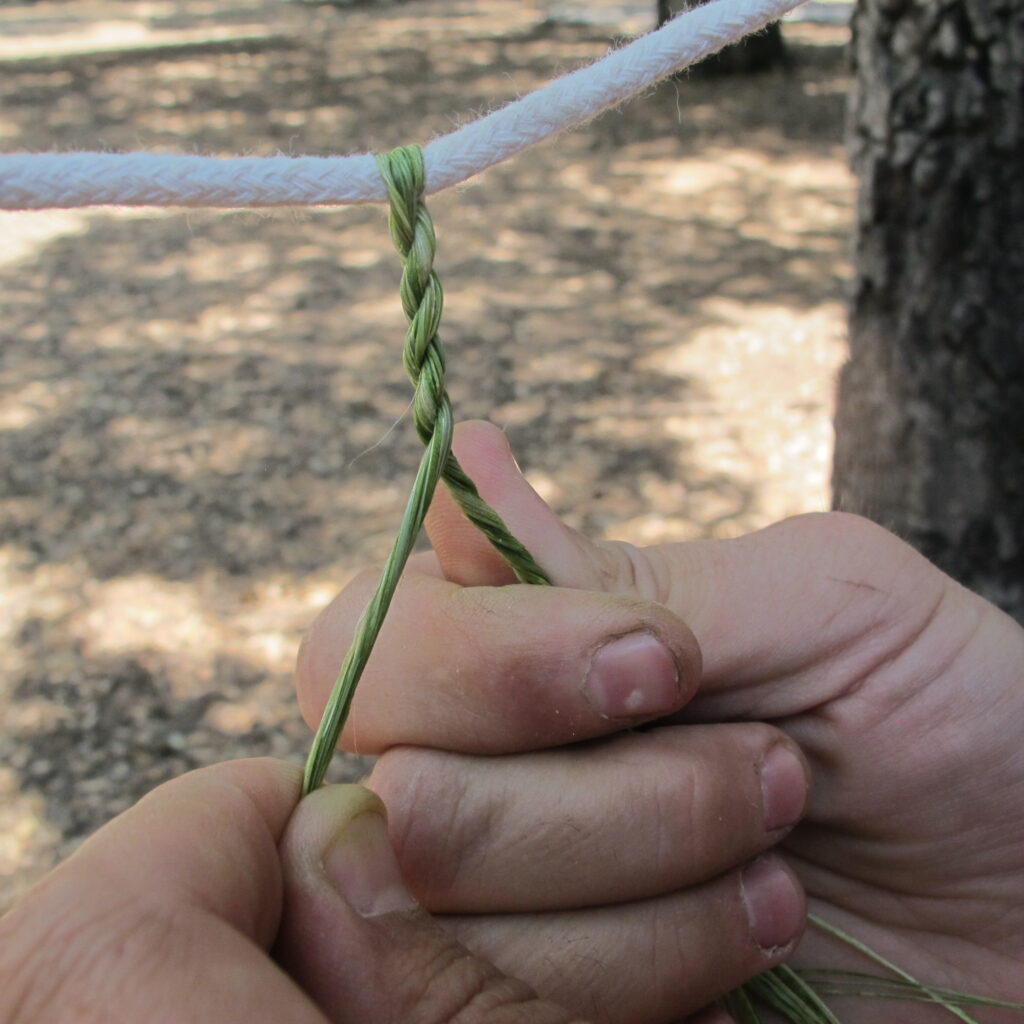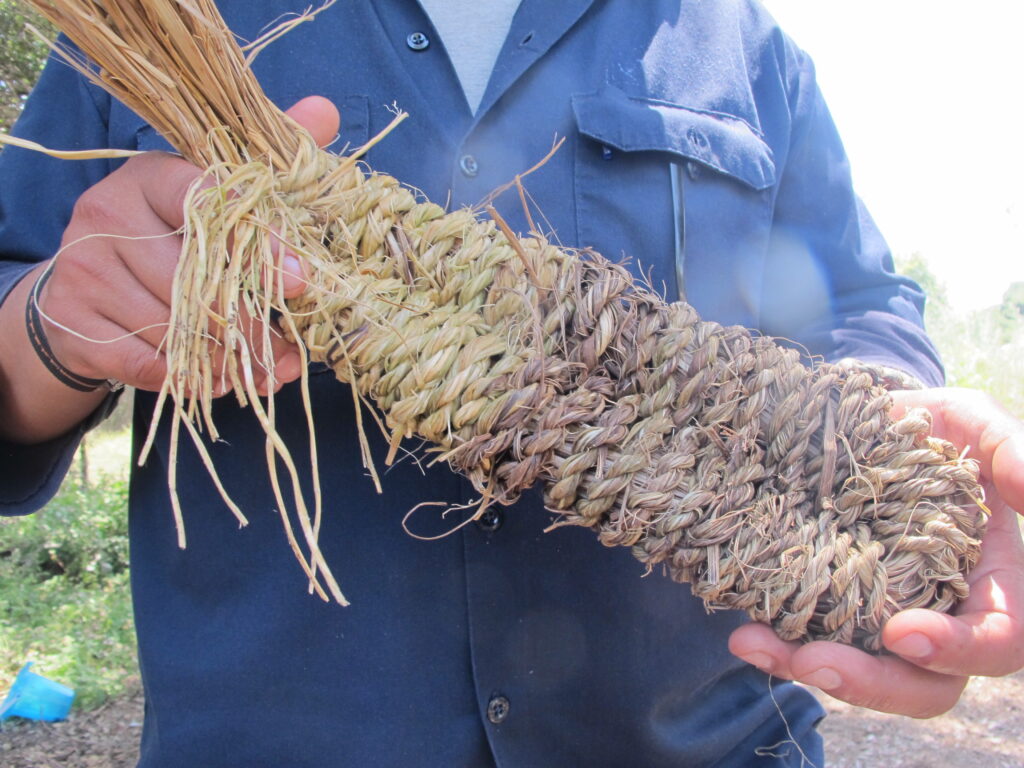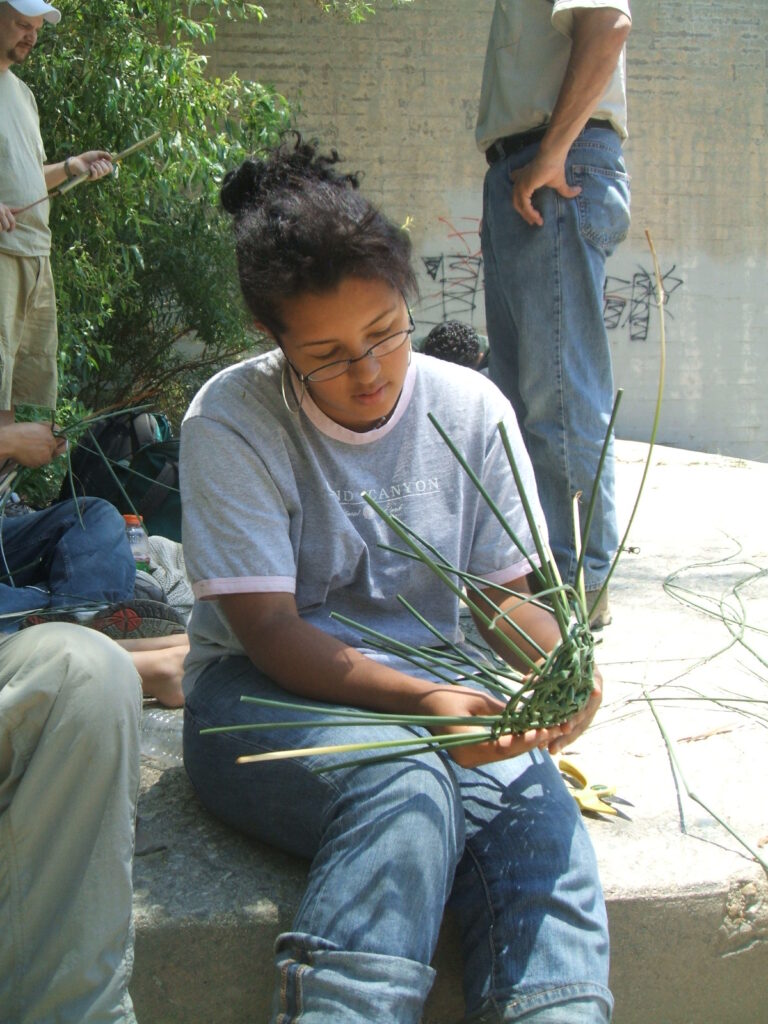Christopher Nyerges [www.SchoolofSelf-Reliance.com]
THE WORLD IS TIED TOGETHER WITH FIBRE
It has been said that the world of the ancient ones was tied together with fiber. This statement was true both literally and figuratively.
Though it is literally true, it is a point lost on modern city folks who only think of some dietary concept whenever you mention “fiber.” In the modern world, the ability to extract fiber from raw nature is fast becoming a lost art, since virtually everything we use is made by someone else, far away. Our clothes are made in factories. We never see the cotton on the farm, the wool, or the various other fibers made into sheets of fabric. And modern fastening devices—Velcro, buttons, zippers—have given us even less reason to consider the everyday value of ties.
In pre-industrialized societies, one’s very clothing would be made from weaving various plant fibers together into skirts or robes or more complicated garments. Various types of sandals have been woven for millennia from local leaves, roots, or bark.
Fiber was also used in home construction, whether a simple dome-shaped grass covered house, or a templelike house built from bamboo secured with stout vines.
Fibers were woven into all manner of carrying bags, packs, sacks, fishing nets, snares, traps, and cordage for the bow strings. Fiber was everywhere in nature, and each was chosen for each application based on the suitability determined by everyday experience.
Javier Palare (left) and James Ruther work on tying the knots for a rectangular net.
It is a sad fact that we have so lost this basic knowledge that not one in a hundred campers carries along cordage or rope anymore. I have long considered that the “holy trinity” of must carry items includes a knife (primitive or modern), a fire starter (primitive or modern), and twine of some type. I also consider the ability to find or make all three of these from the wilderness to be the first skills that anyone should master.
Fibers make life easier, such as mats for sleeping or even sleeping bags. I once made a primitive loom in my parents’ backyard and wove together two large rectangular cattail mats. I then wove the two mats together on three sides and slept that night in my somewhat cool cattail sleeping bag.
Basketry has become an art and science in its own right. Depending on your skill level, you can create a simple container in a few minutes or a beautiful work of art that would be the equivalent of money in primitive societies. Depending on your intended use, the materials for each basket, as well as the design, are specifically selected.
These are some of the literal ways in which fibers were everywhere in the life of ancient peoples.
If you don’t know the plants, but you need fibres for sandals, rope, nets, brushes, etc., there are simple ways to test. In general, for fibre, we’re talking about the whole leaf of a plant (generally long linear leaves), or bark (where long strips can be pulled off easily), or long roots.
If you can tug from side to side on a piece of such fibre, and it doesn’t break, it will probably serve you well. If you can wrap it around your finger and it doesn’t fall apart, if has a good tensile strength and will serve you sell.
Still, it’s a good idea to get to know some good plant materials.
Angelo Cervera shows a copy of Nyerges’ book, “How to Survive Anywhere,” which has a whole chapter on plant fibres, and how to make cordage, brushes, etc.
CATTAILS (WHOLE LEAVES)
Cattails are easy to work with and they grow everywhere. They do not have high tensile strength, so their use is limited to baskets, sandals, mats, but usually not rope that would be under pressure.
Cut them while they are green and let them dry for a few days. They will change from green to a dull green or tan color and they will shrink a little. Moisten them, and then begin your weaving.
NETTLES (AND OTHER INNER BARK FIBER FROM STALKS)
Nettles are also common, but you need to carefully handle them so you don’t get stung. Collect the tall stalks—they can be used fresh or dried. Wet the stalks and gently pound them with a rounded wooden club or mallet. This releases just the fiber, which you can now twine, braid, or weave into an end product.
YUCCA (AND OTHER LEAF FIBERS)
Students learn how to make traditional sandals from yucca leaves in a School of Self-Reliance class.
Yucca leaves can be used green or dried; it somewhat depends on your need and the end product.
To use green leaves, cut off the individual leaf and shred it between the hands. Agitate it in water and rub the leaf back and forth between your hands to leave just the fiber. Then make rope, sandals, or other products, remembering that the fiber will shrink somewhat.
The dead leaves are also abundant. Collect them and rub each leaf over a smooth branch or a metal pole. This will cause lots of dust and you’ll be left with good fiber. Once processed this way, you can wet it (for pliability) and then weave baskets, rope, and the like.
The sisal plant, growing in Mexico.
TWINE
Monica Montoya works on a round net, used for fishing. All the cordage is from the sisal plant.
Making twine is a good first project, since that twine can then be used in most other projects. Even the twine itself may be needed for any of a hundred or so uses.
To begin, you can tie off one bundle of fibers, or you can simply bend a bundle in the middle. You need to have two equal sections. Twist the right half (we’ll call it A) to the right, and pull it to the left, over the top of the other fiber section (called B). Now the untwisted section (B) is on the right. Twist B to the right and again pull it to the left, over the top of A. Simply repeat this over and over, twisting the segment on the right to the right, and pulling it to the left over the top. This is twining.
You can make this any thickness you need, and you can make this as long as needed by adding new fibers periodically.
BRAID
The right strand is twisted to the right, and pulled to the left.
Women have it over men on this one, since the majority of women not only know how to braid, but they could do it in the dark! (Think about that.) It matters not what sort of fiber you are using to braid, whether it is plant fibers, hair, or rags.
Once you have learned how to make simple cordage and braids, you can learn to make nets, sandals, baskets, brushes, mats, and more.
One style of a traditional yucca-based sandal
These are detailed skills which are best learned in an in-person class so you can see the nuances involved with both the raw material and the techniques.
Daniella Del Valle working on a basket made from Juncus leaves.
We’ll come back to some of these skills later.
In the meantime, get a copy of my book, “How to Survive Anywhere,” and make some progress.


